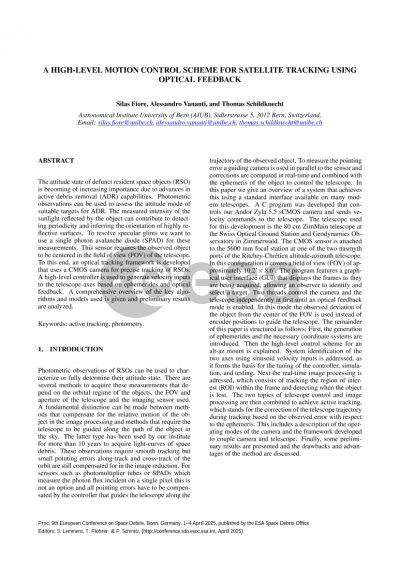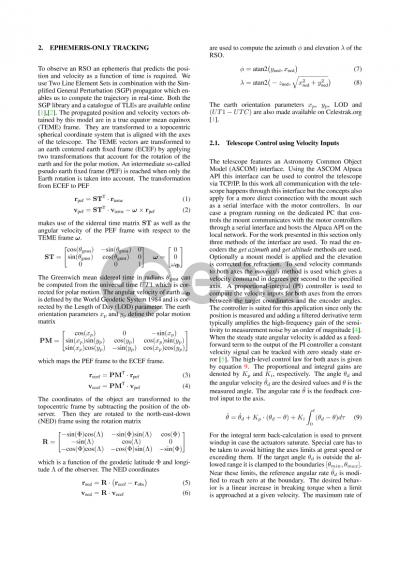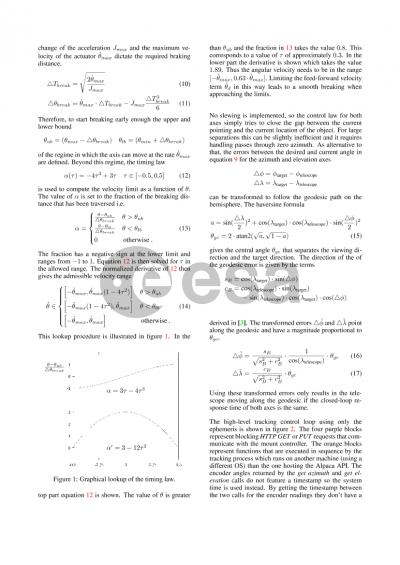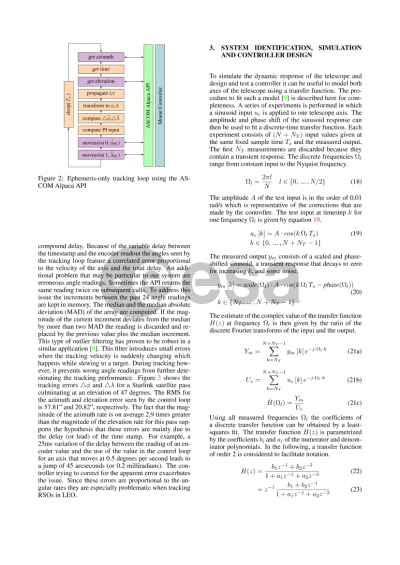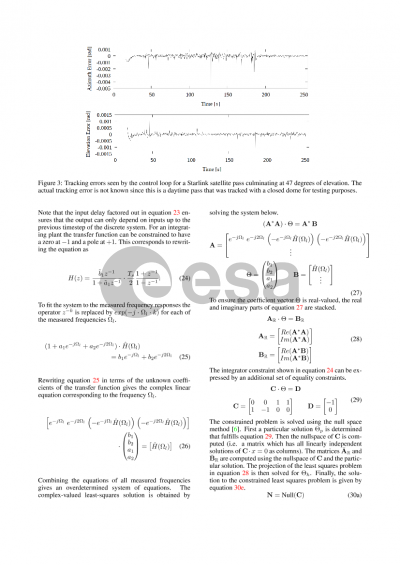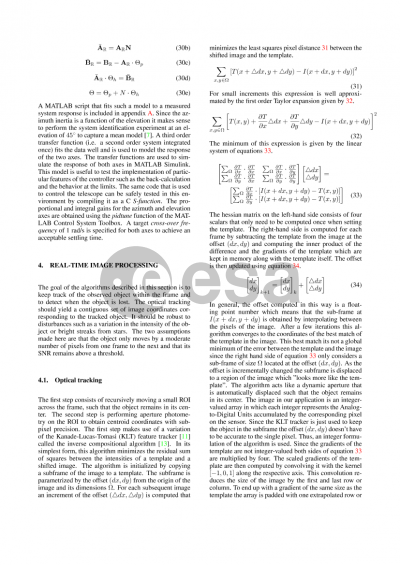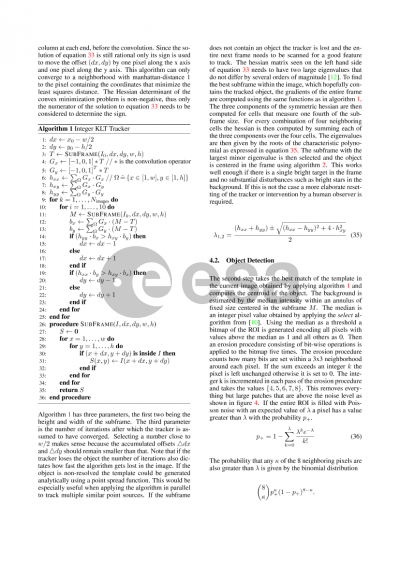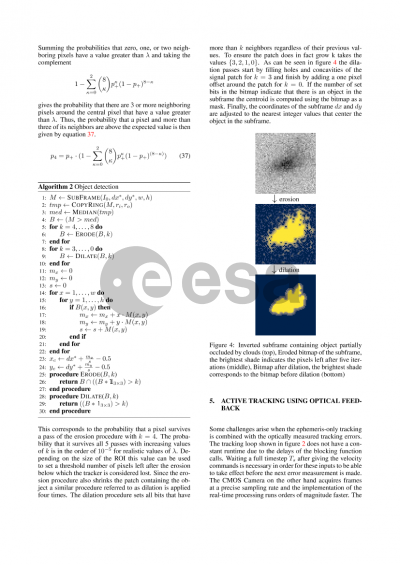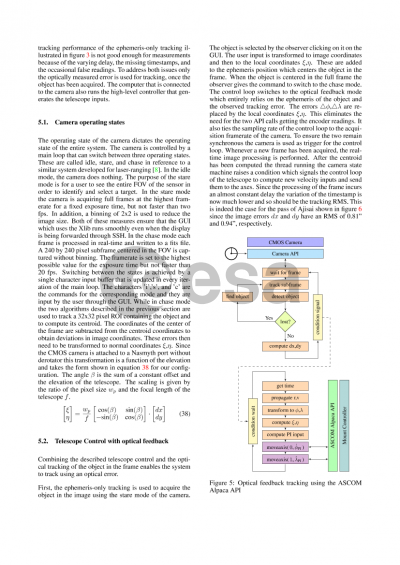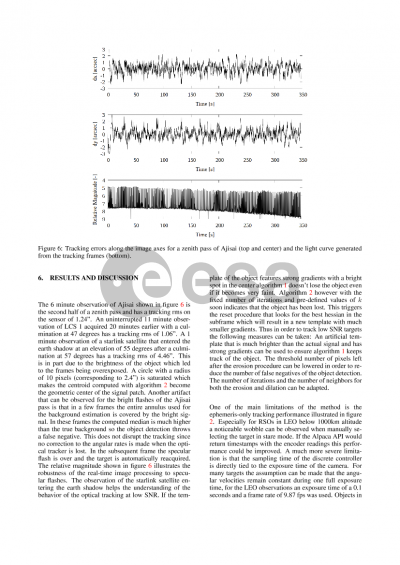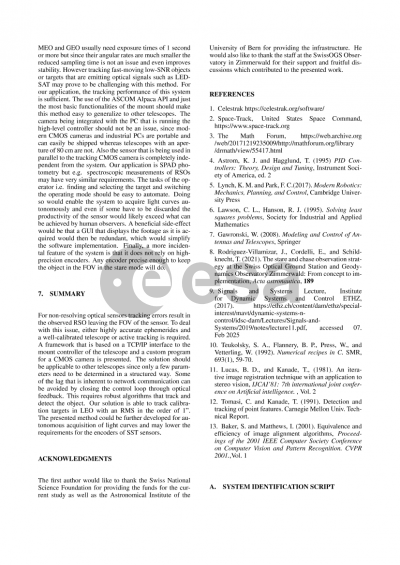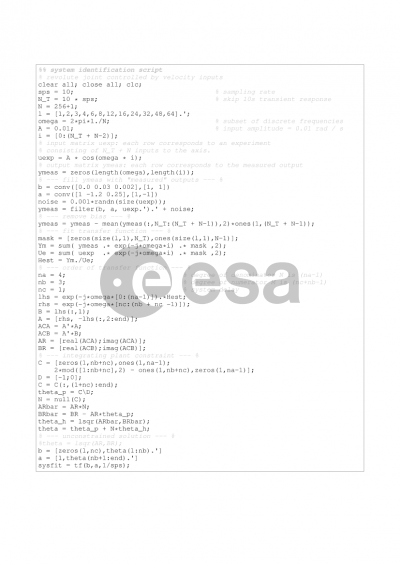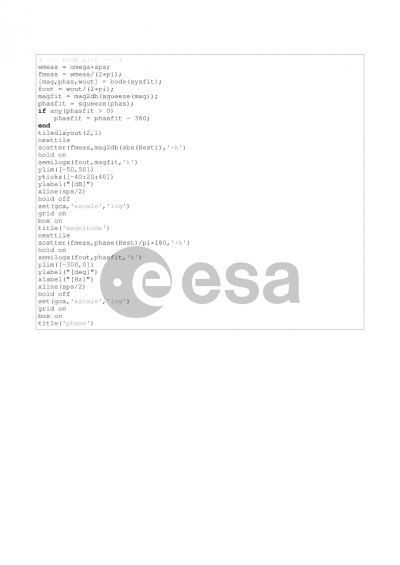Document details

Abstract
The attitude state of defunct resident space objects (RSO) is becoming of increasing importance due to advances in active debris removal (ADR) capabilities. Photometric observations can be used to assess the attitude mode of suitable targets for ADR. The measured intensity of the object over time is called a light curve. Specular glints in these measurements can greatly contribute to detecting periodicity and inferring the orientation of highly reflective surfaces. However, due to the change in observation geometry and attitude of the object, these high-amplitude variations can be of very short duration. The temporal resolution of light curves acquired with astronomical cameras is limited by the exposure time required for a sufficient signal-to-noise ratio (SNR) and the sensor readout time. In this context, we want to use a single photon avalanche diode (SPAD) to obtain light curves that have a higher dynamic range and a sub-millisecond temporal resolution. The photosensitive area of this sensor only measures 100 microns, so the object needs to be stabilized precisely in the center of the field of view (FOV). Since the targets of interest are mostly space debris, we can't rely on high-precision orbit predictions and we have to use a CMOS camera to actively guide the telescope. All communication with the telescope happens through a standard interface found on many modern telescopes. In our method, a propagator is used to compute the position and velocity of the object at the time of observation. The telescope is guided along the arc of the object in a closed loop while the camera acquires full-size frames. When the object enters the FOV of the telescope it is identified and selected manually, and the algorithm applies the necessary corrections to bring it to the center of the image. Then an optical feedback mode is enabled and a centroid is computed from the raw CMOS frame in real-time. A Kanade-Lucas-Tomasi tracker is used to reduce the number of pixels that are processed to a small region of interest that follows the object in the frame. The centroid serves as input to the high-level controller that corrects for any deviation from the center of the frame. The key challenges of the system are the seamless transition between the operating states of the camera and the telescope as well as the latency of the interface. Because the tuning and testing of such a system take up valuable observation time, and to make the method more generally applicable, only a few tuning parameters are used. The use of an alt-azimuth mount and an equatorial mount are investigated and the limiting factors of the method are identified. Besides enabling the acquisition of light curves using a SPAD sensor the proposed framework could be extended for the fully autonomous acquisition of light curves.
Preview
